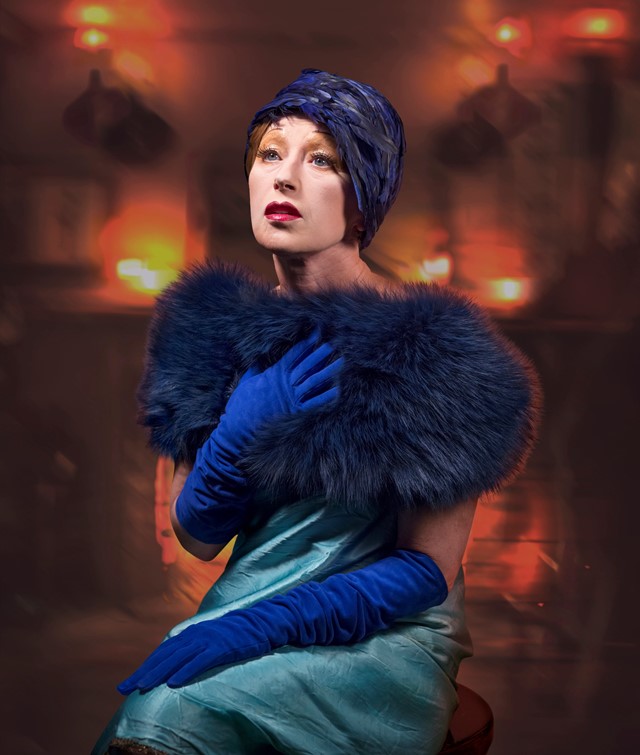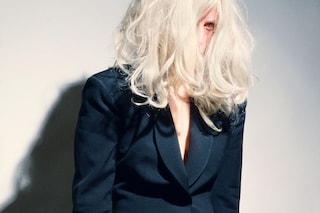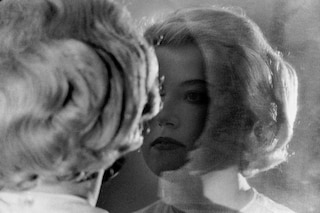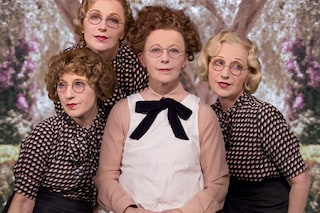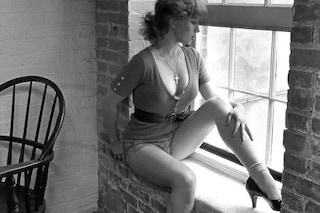As the American photographer’s retrospective opens in London, we speak to curator Paul Moorhouse about the elusive artist and her extensive oeuvre
National Portrait GalleryIn 2011, a print of a photograph by Cindy Sherman sold at a New York auction for $3.89 million. Shot in 1981 as an Artforum magazine commission, “Untitled #96” was the most expensive photograph ever sold at the time. But the American photographer’s images were not always so popular. Back in the 80s, a lot of her commissioned work (including the Artforum three-million-dollar-photograph) was never published for fear that people would not understand it.
Ambiguity – the quality of having more than one possible meaning and therefore causing uncertainty – is central to Sherman’s work. Her portraits are confusing: the character’s expression is often suggestive but not quite decipherable, and elements of the image always look a little off.
“In foregrounding artifice, her work poses questions about the veracity of images... such questions have never been more relevant” – Paul Moorhouse
Born in 1954 as the youngest of five children – with a nine-year gap between her and previous born sibling – she experimented with costumes and makeup from an early age, walking around her house and neighbourhood in the roles of several imaginary characters. While she originally took up painting at school, she soon pushed her passion for dress-up a step further when she began photographing herself while studying at the State University College at Buffalo – which she attended from 1972 to 1976. It’s in these works that we really see the beginnings of a new photography genre that would revolutionise – and question – portraiture. An influence to generations of image-makers to come, Sherman won a MacArthur “genius” grant in 1995 and has since received almost every prize and award she could have received throughout her career. She has also been celebrated in the fashion world, having worked with luxury brands from Louis Vuitton to Balenciaga, Comme des Garçons and Marc Jacobs.
Now, Cindy Sherman’s photographs from the mid-70s to present day are the subject of a retrospective at the National Portrait Gallery curated by Paul Moorhouse. The exhibition begins with the “Cindy Book”, a scrapbook of images of Sherman that she made as a child, each labelled with an adolescent scrawl: ‘that’s me’. It’s the starting point of a lifetime exploration with identity that moves across the course of four decades, with Sherman portraying herself in the guise of many hundreds of different fictitious personas. There has been the sultry seductress and the damsel in distress of her faux cinema stills, the freakish clowns, the mutilated, nightmarish creatures of Fairy Tales, and the more recent trophy wives with fake tans. “That body of work is unique, her approach completely individual, and the look of her photographs immediately recognisable,” says Moorhouse. Speaking about Sherman’s long-lasting influence, he adds: “In foregrounding artifice, her work poses questions about the veracity of images. In our media-dominated and image-obsessed society, in which social media and fake news are conspicuous features, such questions have never been more relevant.”
With the exhibition opening on Thursday 27th June at National Portrait Gallery, we asked Paul Moorhouse to give us an insight into some of the images on show.
HER FOUNDATIONS ARE BUILT ON HOLLYWOOD CINEMA
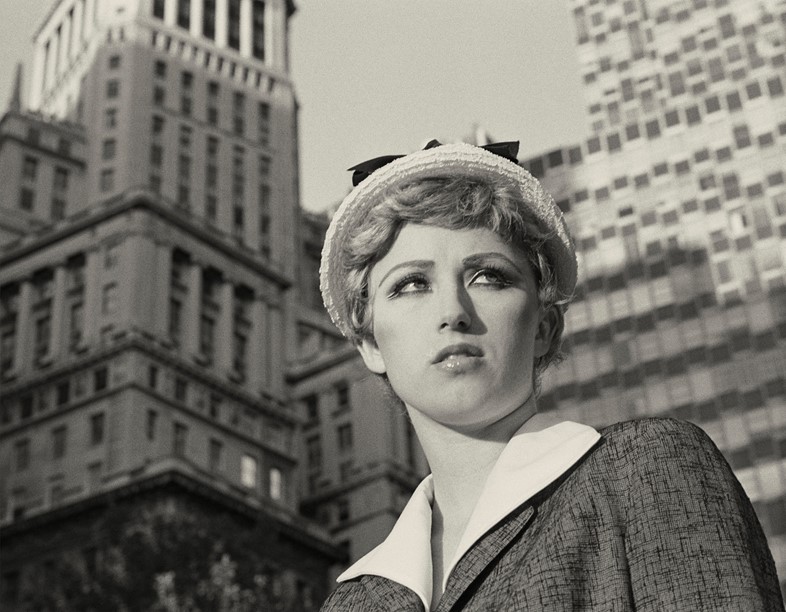
“‘Untitled Film Still #21’ belongs to the series that really commenced Sherman’s mature work. It’s the series which, when it was first exhibited in New York in 1979, really brought to the attention of a wider audience a really distinctive and unusual artist.
“It draws on her fascination with cinema which goes right back to childhood. As a very young child, she would spend quite a lot of time glued to the television, watching reruns of classic movies and a series called Million Dollar Movie (which ran on local station WOR TV). She’d play the same films over and over. She saw lots of films this way: both American films, and B-movies, and film noir, but also Italian neorealism and French New Wave. She’s a real cinema addict. I think that taught her a vast amount and informed her visual imagination.
“One director, in particular, made a big impression on her, and that was Alfred Hitchcock. His film Rear Window (1954) has had a huge significance (on her).
“The images usually contain a lot of clues. So you can feel your way into the situation and invent your own story and backstory” – Paul Moorhouse
“The Film Stills are very unspecific, they don’t make particular correlations with particular films – they’re not representative of very particular individuals or anything like that. What they do is they mix and match. They draw on a range of different styles and you kind of sense where they’re coming from without being able to put your finger on it.
“The thing about these images is that you are invited to bring your interpretation to them. But having said that, the images usually contain a lot of clues. So you can feel your way into the situation and invent your own story and backstory. In this image, the character seems to me to be a woman in the mid-50s, she does look as she might have stepped out of a Hitchcock film, it could be Vertigo. But other than that, her makeup is perhaps not slightly accurate for the 50s. And that’s another point: (the scenarios) are deliberately disjunctive. It doesn't all fit together in a coherent, logical way. You’re looking at something that appears to be realistic but something about it makes you realise that it’s not. So you’ve got a slight disjunction in the makeup and the costume. It gives you a misleading feeling about what you're looking at.”
SHE TURNED HER CHILDHOOD LOVE FOR DRESS-UP INTO A CAREER
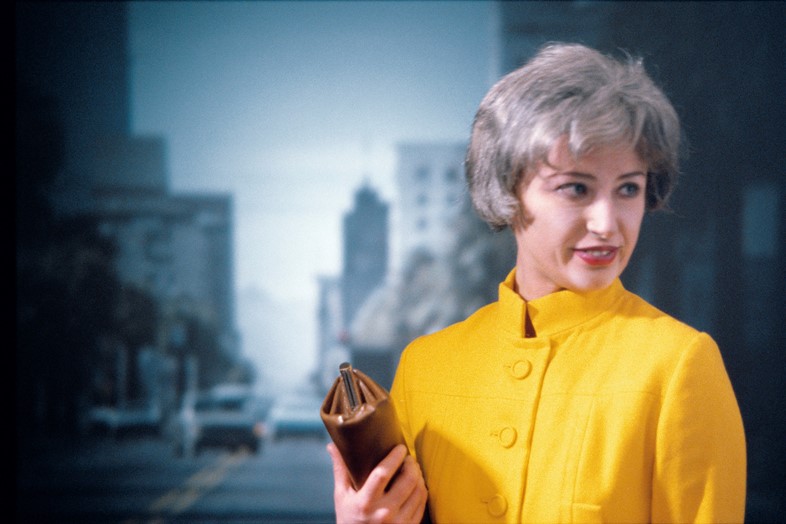
“Very early on, when she was a child living in Huntington, in Long Island, her great-grandmother gave her some 1920s-style clothes, and she, like a lot of young children, really enjoyed dressing up, pretending to be other people. She became quite fascinated by the way costumes could lend her an alter ego. She could create quite a convincing, imaginary person. One of the earliest manifestations of this was around the age of 12 when she basically turned herself into an old lady. There is a photograph which shows Cindy performing in the role of an old woman and it’s a very convincing one. It’s from those roots I think that you have the succession of imagined characters which has continued to the present.
“Her fascination with inventing characters continued after she went to Buffalo State University. On one occasion she was in role, dressed up, impersonating the American comedian Lucille Ball, and she was exactly like that real person, and her friends said: ‘Why don't you take a photograph of yourself, dressed up in that way?’ which she did. She photographed herself using a photo booth machine and if there is a point when her interest in performance and acting coalesces with photography, then that’s probably it. It became apparent that these two things could support each other.”
ABSOLUTELY NOTHING IS WHAT IT SEEMS
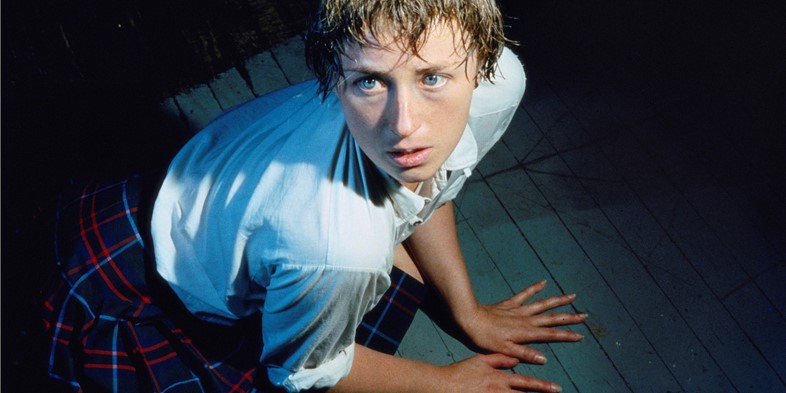
“The work is ambiguous. It’s not prescriptive. It doesn’t set up to prescribe a response. But it does endeavour to lure you into the image and it does that by providing you with lots of visual enticements. Things that will attract your attention and raise questions in your mind about what the image might mean. I think that has a very particular purpose. It’s not simply a polar game that she is enacting, she’s doing something that has a very particular function. In our everyday life, we are surrounded by people and situations whose significance we endeavour to fathom by interrogating the way they look. We don’t really know what other people are like, but we spend a great deal of our time trying to figure out what people are like and what they’re thinking and what situations are actually all about purely by interrogating the appearance that is presented to us.
“Her work is never intended to be realistic. You’re not seduced into thinking that what you’re looking at in her work is the real thing. There is always a disjunction. Whether it’s dodgy make-up, some kind of disjunction between the character and the background, or some kind of anachronism in the imagery.
“You’re always aware that what you're looking at is always a veneer, a surface. The role of appearance in her work is foregrounded. She’s alerting of the fact that in our lives, we’re surrounded by appearances.”
SHE’S A ONE-WOMAN PRODUCTION COMPANY
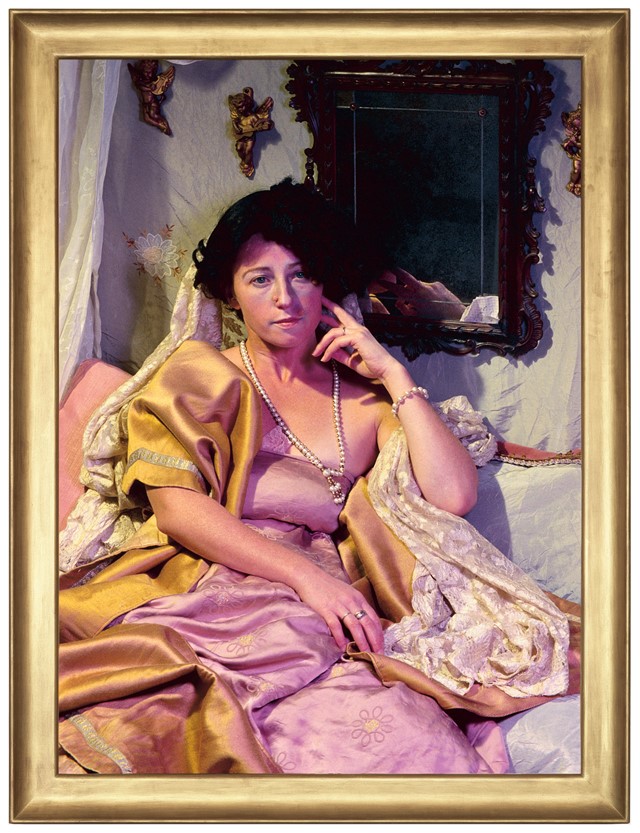
“At the beginning of her career, (props) were very basic. When she started her Untitled Film Stills, in 1977, she had three wigs and the content of her kitchen.
“She then used chairs and other household objects, background scenes, when she moved outdoors in New York to flesh out the tableau. But as the work has developed it's become progressively more elaborate and more sophisticated. Around the time of the Fairy Tales, prosthetics began to become part of Cindy’s armoury. She was moving beyond costumes, beyond weight, beyond makeup, beyond simple objects. She was using a whole range of prosthetics that augment the fantasy, the illusion that she was engaging with. And since then the use of props extends to highly sophisticated makeup, a broad range of costumes and all kinds of digital technology as well.”
NONE OF HER IMAGES ARE ACTUALLY ABOUT HER
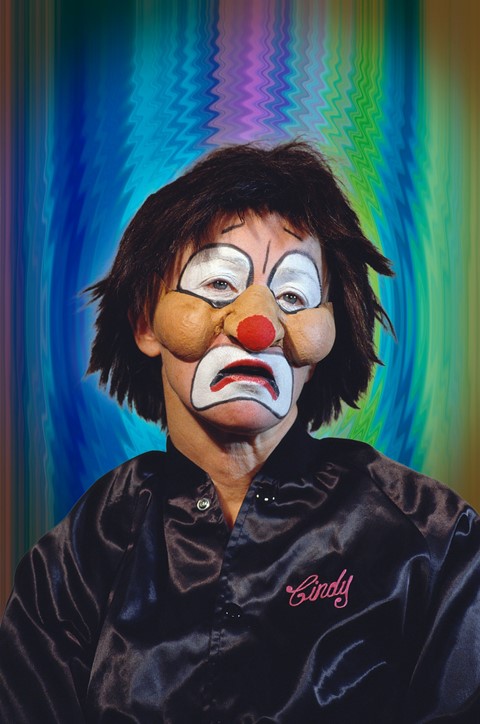
“The clown has her name written on the costume, ‘Cindy’. She’s kind of drawing attention to the fact that she is acting, performing, using makeup and prosthetics and behind that appearance, there is something that we can only speculate on. It’s the enigmatic Cindy Sherman.
“She never reveals herself in her work, that’s the whole point. What you’re looking at is the surface. That’s why she stresses the importance of ambiguity that’s supposed to be inexplicable.
“I don’t think (the images) are ever autobiographical. I think it’s a complete red herring to describe her work in any way as a selfie. Only selfies in as much as this is somebody taking a photograph of themselves. But the subject of Cindy’s work is not herself. What she is creating is a persona that she’s inhabiting. The significance of that is the idea of not ever knowing what people are like apart from how they appear. That’s the essence of what she’s doing. That’s a philosophical question and a deeply human one.
“Cindy’s work has a great deal to tell us about that situation which each of us has. And actually, quoting from cultural sources, the work isn’t random, it’s highly calibrated and very specific in terms of the things that she quotes from the culture. And that’s because we’re surrounded by images, generated by our culture whether it’s cinema, or television, or fashion, or social media, or pornography, or any other cultural platform you can think of. She plunders it and quotes from it. And by inviting you to speculate about the meaning in her work, I think she is raising questions about the meaning of these things in our cultural lives. In the age of fake news, social media, in all those things, we know, sense, that things are not quite like they appear. So her work has never been more relevant in raising those kinds of questions.”
SHE HAS NOW REACHED ICON STATUS
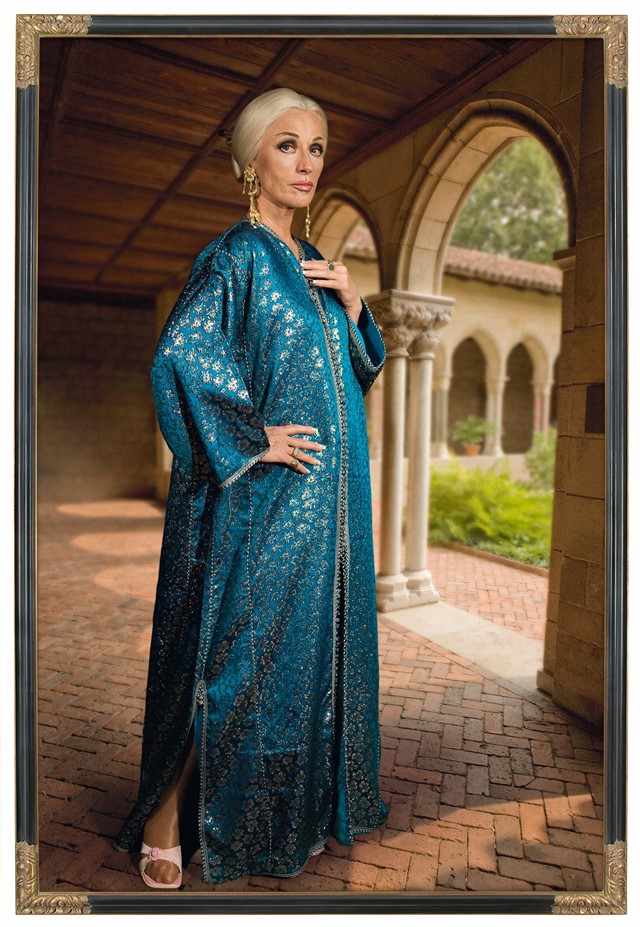
“People see them differently now from when they were seen at the time. They’re now perceived as almost iconic, post-modern works. I don’t know if anyone would really have known about post-modernism at the beginning. That’s how we see them now because there’s such an amalgam of styles.
“When they were first seen, I imagine people found them very intriguing, very distinctive without necessarily knowing why. It’s actually quite difficult to locate what’s going on in the works. In some ways that might simply be true for herself, she was exploring something without quite understanding everything about what she was doing.”
Cindy Sherman runs at London’s National Portrait Gallery from 27 June – 15 September 2019
